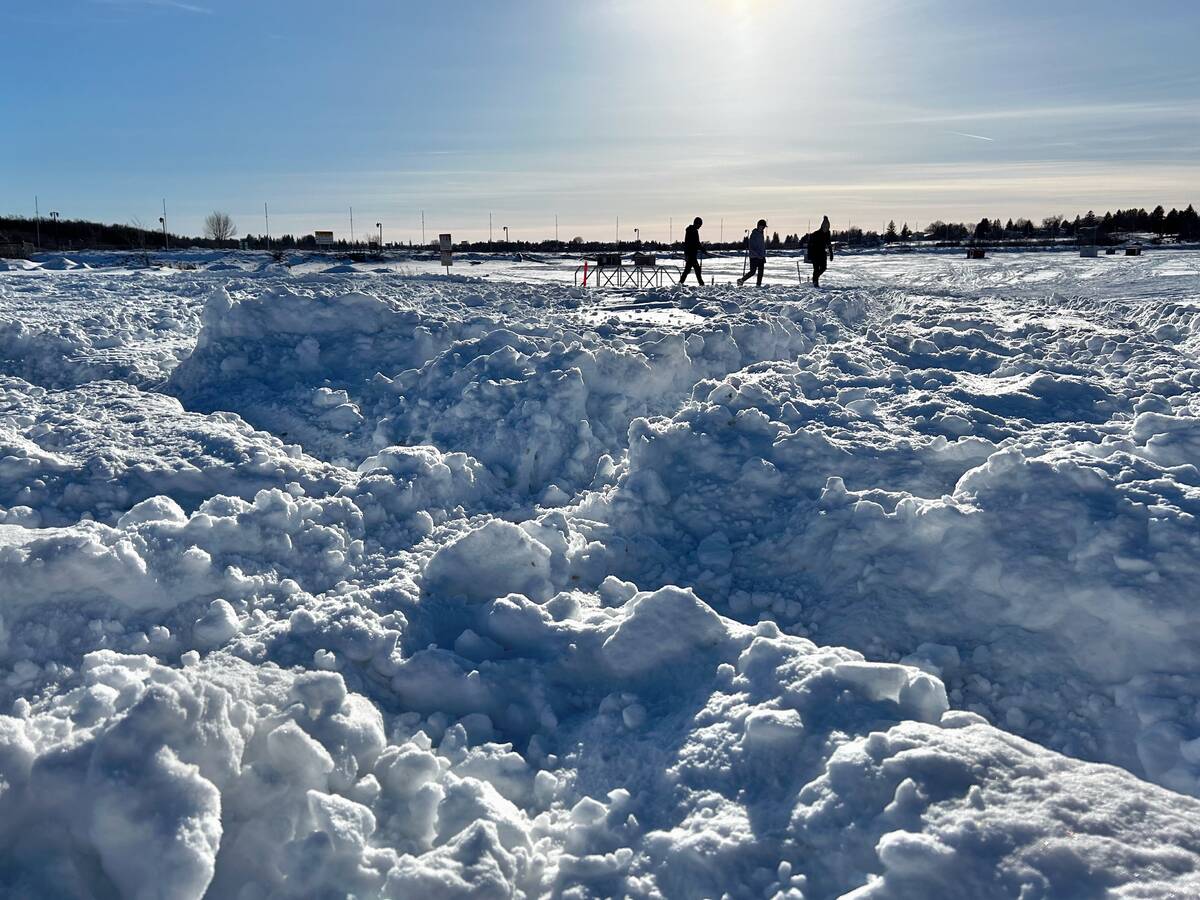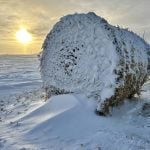It is time once again to look at last month’s weather and peer ahead to the latest long-range forecasts. Fall is now officially over and we are beginning the meteorological winter, so let’s see how the fall weather numbers added up.
Alberta once again had a very warm month compared to the long-term average. The Peace River region saw a mean monthly temperature around -1.2 C, which was a remarkable 6.5 C above average. The Edmonton region reported a mean monthly temperature of about -0.5 C, or about 5 C warmer than average. Calgary was the warm spot, with a mean monthly temperature of 2.3 C, which is about 4.7 C warmer than average.
As we often see with mild weather at this time of the year, precipitation was light in November. Amounts ranged from one to five millimetres in the Calgary and Edmonton regions and about 10 mm in the Peace region.
Read Also

Predicting Manitoba winter snowfall
How much snow should farmers in Manitoba expect for the rest of December 2025 and into January-February 2026? Here’s what the weather models say about the winter to come.
Saskatchewan also saw a warmer than average November. Saskatoon was the warm spot with a mean monthly temperature of -1.3 C, which was about 4.7 C warmer than average. Regina reported a mean monthly temperature of -2.7 C, which was about 2.5 C warmer than average.
Precipitation was below average in Saskatoon with about six mm of water equivalent precipitation recorded. This is about 50 per cent of average. Regina, on the other hand, recorded 21.7 mm of water equivalent precipitation, which was above the long-term average of 15 mm.

Manitoba also reported above average temperatures. Both Winnipeg and Dauphin reported mean monthly temperatures of around -2 C, which is about 3 C warmer than average. Brandon was the cold spot with a mean monthly temperature of -3.2 C, about 2.5 C warmer than average.
Precipitation in the Brandon and Dauphin regions was below average, with both locations reporting around 13 mm of water equivalent compared to an average of 20 mm. Winnipeg saw above average amounts and was the wet spot for the Prairies with a reading of 32.3 mm, seven mm above average.
Overall, November was warm and dry across the northern and western Prairies and warm with near average precipitation across the southern and eastern Prairies.
Looking at the forecasts, both almanacs were way off, as they called for a cold and snowy month. Looking at the computer models, it’s a tough call. NOAA, CFS, CanSIPS, and my forecast all called for above average temperatures.
Looking at the precipitation forecasts, NOAA and my forecast called for below average, while the CFS and CanSIPS called for near average. Looking a little closer, my forecast called for below average precipitation in the west and above average in the east. You can make your own call, but I am taking the win this time.
Now let’s look at this past fall, the September to November period. It might be easier to look at the data in a table.
It was a warm, dry fall with most locations reporting a mean fall temperature of 2 C or more above the long-term average. The actual temperatures were remarkably similar, ranging from 5.2 C in Brandon to 7 C in Calgary. All locations except Winnipeg saw below average precipitation and the Edmonton region was driest.
In the latest long-range forecasts for the next three months, the Old Farmers Almanac calls for well below average temperatures through to February, along with near to above average snowfall.
The Canadian Farmers Almanac calls for near average temperatures in December along with near to above average snowfall. January looks to have below average temperatures and above average precipitation. February will also see below average temperatures with below average precipitation.
As for the weather models, NOAA’s forecast calls for above average temperatures with western regions seeing the warmest conditions, along with below average precipitation. The CFS model calls for a very warm December and January with temperatures running from 2 to 3 C above average. Its latest forecast shows cooling in February with temperatures around average. Precipitation is forecasted to be near average.
The Canadian CanSIPS model forecast calls for a warmer than average winter with near average precipitation. December is forecasted to see well above average temperatures along with near average snowfall.
Its January forecast is for a slight cool down to near average temperatures over western regions and slightly above average in the east. Precipitation is once again forecasted to be near average. Things warm up again in February, with above average temperature forecasts for all three Prairie provinces and, you guessed it, near average precipitation.
The last model is the European ECMWF. This model is forecasting near to slightly above average temperatures for all three months with western and northern regions having the best chance for above average temperatures. Its precipitation forecast calls for near to slightly below average amounts in December, followed by near average amounts over Saskatchewan and Alberta in January and February but near to above average amounts over Manitoba.
Here’s my attempt to make sense of all of this. I lean toward a continuation of the above average temperatures with a good chance of a cool down late in the winter. Now remember, this doesn’t mean we won’t see any really cold weather, rather the warm spells will dominate over the cold spells.
Precipitation is always tricky to forecast, especially in winter. I am going with below average amounts in December and January with above average amounts in February.
















